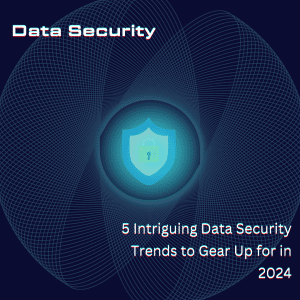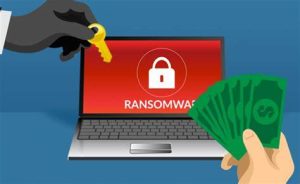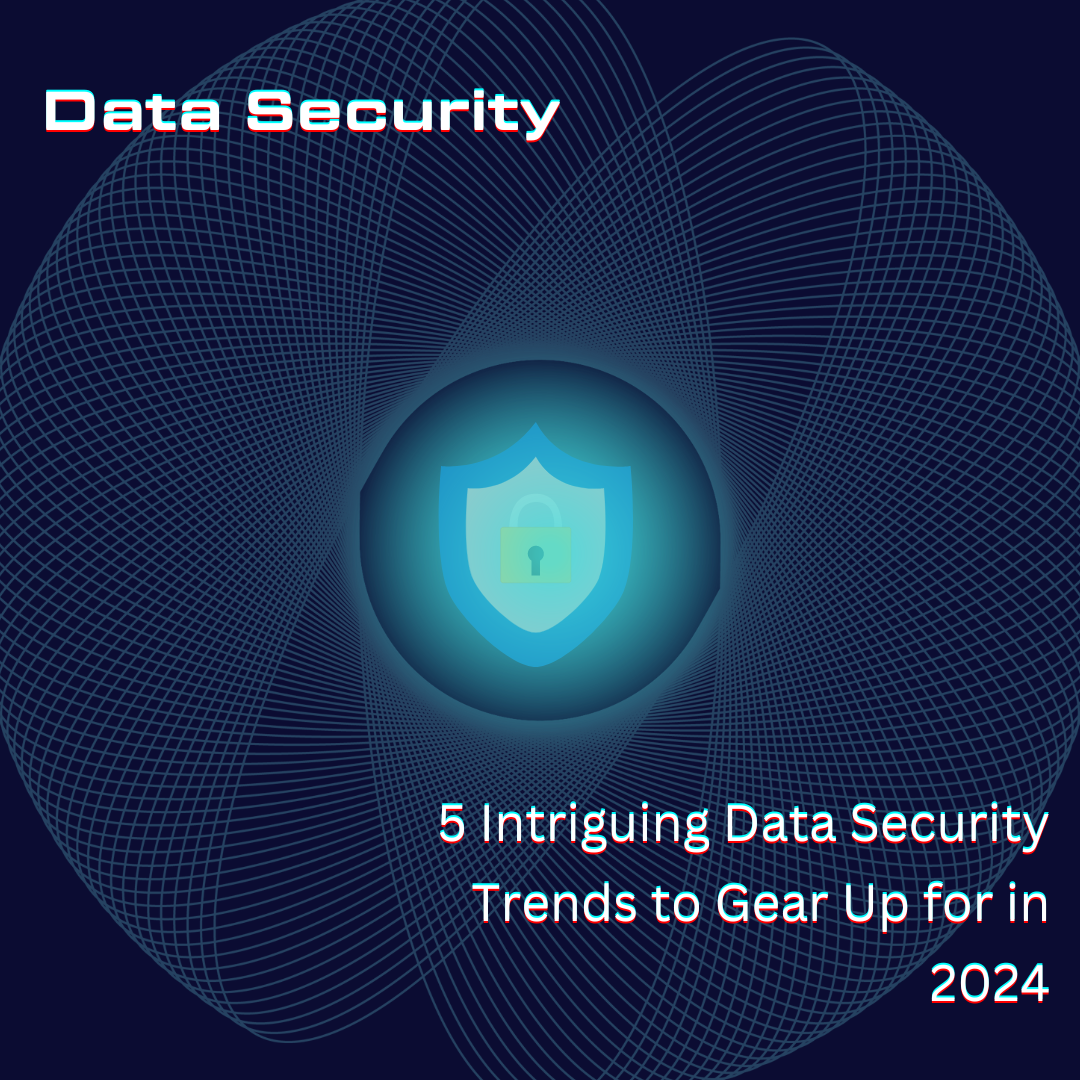
In a world where cyber threats are evolving alarmingly, staying ahead of the curve is crucial for data security and safeguarding sensitive information. Data security threats are becoming more sophisticated and prevalent. The landscape must change to keep up. In 2024, we can expect exciting developments alongside persistent challenges.
According to a recent survey, over 70% of business professionals believe that their data privacy efforts are worthwhile and result in “significant” or “very significant” benefits for their business. Staying informed about these trends is pivotal. Whether you’re an individual or a business safeguarding valuable data, this is true.
Here are some key areas to watch.
1.AI and Machine Learning in Data Security

Artificial intelligence (AI) and machine learning (ML) are no longer futuristic concepts. They are actively shaping the cybersecurity landscape. This year, we’ll likely see a further rise in their application.
AI and ML algorithms excel at analyzing massive datasets. This enables them to identify patterns and anomalies that might escape human notice. This capacity translates to faster detection and response to potential cyber threats, strengthening data security measures. AI can predict potential vulnerabilities and suggest proactive measures. It does this by analyzing past cyberattacks and security incidents.
AI can go beyond detection and analysis. Professionals can program it to automatically isolate compromised systems, block malicious activity, and trigger incident response protocol. This approach can enhance cyber security by saving valuable time and minimizing potential damage.
AI and ML offer significant benefits. But it’s important to remember they are tools, not magic solutions. Deploying them effectively requires skilled professionals and experts who can interpret the data and make informed decisions.
2. Battling the Ever-Evolving Threat: Ransomware

Cybersecurity has become more critical than ever before due to the increasing threat of ransomware. Ransomware is a malicious software that encrypts data and demands payment in exchange for access to the decryption key. Unfortunately, hackers have become more sophisticated in their tactics, and ransomware is expected to remain a significant threat. These attackers will likely focus on selecting high-value targets, such as critical infrastructure and businesses with sensitive data, to maximize their impact and potential payout.
Ransomware-as-a-Service (RaaS) is another problem. This type of service allows people with limited technical expertise to rent ransomware tools. This makes it easier for a wider range of individuals to launch attacks. Apart from encrypting data, attackers may also steal it beforehand. They may then threaten to leak the data publicly if the ransom is not paid, which adds more pressure on the victims.
3. Shifting Strategies: Earlier Data Governance and Security Action

Traditionally, data security measures were implemented after data was stored or analyzed. However, a new approach is gaining traction in 2024, emphasizing the need to act earlier. Organizations are now taking steps to integrate data controls and measures right from the start of their data journey instead of waiting till the end. These steps may include setting data classification levels and access restrictions, also defining data retention policies early in the process.
More organizations are moving towards Cloud-Centric Security, that is cloud storage and processing. Cloud platforms will be closely integrated with security solutions to ensure consistent security throughout the data lifecycle.
Data privacy regulations like GDPR and CCPA are becoming increasingly stringent. As this happens, companies will need to focus on data governance to ensure compliance.
4. Building a Fortress: Zero Trust Security and Multi-Factor Authentication.
We’re in a world where traditional perimeter defenses are constantly breached. This is why the “Zero Trust” approach is gaining prominence. This security model assumes that no user or device is inherently trustworthy. Users and programs need access verification for every interaction.
Continuous Verification is an important aspect of IT security. It ensures that every access request is rigorously scrutinized, regardless of whether it originates from inside or outside the network. Systems-based verification on factors like user identity, device, location, and requested resources. Companies also grant users the lowest access level needed to perform their tasks. This minimizes the potential damage if hackers compromise their credentials.
Multi-factor authentication (MFA) adds an important extra layer of security. It requires users to provide extra factors beyond their password.
5. When Things Get Personal: Biometric Data Protection
Biometrics such as facial recognition, fingerprints, and voice patterns are increasingly used for authentication, but concerns about potential misuse, privacy violations, and data protection persist:
Secure Storage Is Key as companies should encrypt biometric data for secure storage and prevention of unauthorized access or breaches.
Expect governments to tighten regulations on collection, use, and retention of biometric data. Organizations must prioritize transparency, evolving standards, and user consent.
How to Prepare for Evolving Data Security Trends
Feeling a bit overwhelmed? Don’t worry, here are some practical steps you and your organization can take:
- Keep yourself updated with the latest news and trends in data security.
- Invest in training to improve your security skills and knowledge.
- Regularly review and update your security policies to stay protected.
- Embrace the latest security technologies to enhance your security.
- Test your systems regularly to identify and fix vulnerabilities.
Schedule a Data Security Assessment Today
The data security landscape of 2024 promises to be both intriguing and challenging. We can help you navigate this evolving terrain with confidence.
If you’re concerned about your IT security, conducting a data security assessment is an excellent way to start. Contact us today to schedule yours.






